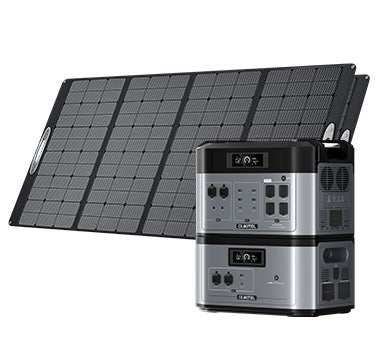The latest forecast from the NOAA (National Oceanic and Atmospheric Administration) in June 2025 indicates that a rare "heat dome" is currently lingering over the Midwest of the United States and is expected to spread to the southern regions within the next week. Cities like Chicago, St. Louis, and Houston will bear the brunt, with temperatures in many areas likely to exceed 105°F (40.6°C) — a temperature that reaches the critical threshold for heatstroke in humans.
To track the high-temperature warnings in your area in real-time, click on the official monitoring map:
https://www.weather.gov/

Alarmingly, research from the First Street Foundation shows that by 2053, this so - called "extreme heat belt" will expand to 1,023 counties, putting over 108 million Americans at risk of experiencing at least one day of 125°F (51.6°C) terrifying heat each year.
When a high-pressure system in the upper atmosphere traps hot air like a lid, the surface temperature can rise by 36 - 37°F (2 - 3°C) per hour. This "heat dome" phenomenon doesn't just break temperature records; it triggers a triple crisis:
Human Body's Limit Test:
- When the core body temperature exceeds 105°F (40.6°C), cellular proteins begin to denature, leading to irreversible organ damage.
- The fatality rate of heatstroke is as high as 50%, and the elderly, children, and people with chronic diseases are especially vulnerable.
- Data from Washington State shows that when the temperature exceeds 108°F (42°C), emergency room visits related to heatstroke surge by 300%.
Urban System Overload:
- In June 2025, New York City implemented voltage regulation due to excessive air conditioning loads, resulting in a 15% voltage drop in some areas.
- For every 1.8°F (1°C) increase in temperature, residential electricity consumption increases by an average of 8%, and the Midwest power grid is now facing the risk of collapse.
- Power outages will lead to food spoilage in refrigerators (bacterial growth rate doubles within 2 hours), medical equipment shutdowns, and communication disruptions.
Social Equity Crisis:
- Due to the urban heat island effect, temperatures in communities of color are generally 7°F higher than those in white communities.
- 25% of low-income households in Seattle do not have air conditioning, and 80% of these households live in concrete - dense areas with little tree shade.
Three-Level Response Mechanism:
-
Yellow Warning (95°F+/35°C+): Initiate twice-daily body temperature monitoring and check on the elderly at home.
-
Orange Warning (100°F+/38°C+): Close south-facing windows and prepare cooling supplies like ice packs.
-
Red Warning (105°F+/40°C+): Implement a full-family heat prevention plan and turn on backup power.
Essential Monitoring Tools:
Indoor Cooling Combinations:
-
Insulation Layer Construction:
- Cover south-facing windows with aluminum foil (can reduce indoor temperature by 41 - 46°F / 5 - 8°C).
- Lay reflective film on the roof (costs about $1.2 per square foot, with a 30% energy-saving rate).
-
Air Circulation Optimization:
- Open windows in the early morning and evening to create cross-ventilation (the best time is from 5:00 - 7:00 and 20:00 - 22:00).
- Use a fan with an ice basin (can lower the local temperature by 39 - 43°F / 4 - 6°C).
-
Emergency Cooling Solutions:
- Make a homemade water cushion: freeze water in a sealed bag and place it under your seat.
- Apply a cold towel: Focus on wiping major blood vessels such as the neck, armpits, and groin.
Calculation of Family Power Load:
Taking a 3-day power outage as an example, the typical power needs of a family of four are as follows:
- Refrigerator (150W): 24h×3 = 10.8kWh
- Air conditioner (1200W): 3h×3 = 10.8kWh
- Lighting (90W): 5h×3 = 1.35kWh
- Mobile phone charging (80W): 3h×3 = 0.72kWh
Total: approximately 23.67kWh
Oukitel Energy Solutions:
-
P5000 Pro Home Backup Power:
- With a large capacity of 5120Wh and supports 3600W high-power output.
- Can stably power an air conditioner for 3 hours, meeting emergency cooling needs.
- Features solar/mains/vehicle charging modes, flexibly adapting to different scenarios.
-
BP2000 + B2000 Home Backup Power:
- Basic capacity of 4096Wh, expandable up to 16384Wh.
- Suitable for powering multiple devices simultaneously, such as medical equipment, refrigerators, and air conditioners.
- Modular design allows for battery modules to be added or removed according to requirements.
Core Supplies Categories:
-
Life-Sustaining Items:
- Drinking water: 1 gallon (about 3.8 liters) per person per day (stock at least 3 days' worth).
- Ready-to-eat food: Canned goods, energy bars (preferably high-protein, low-calorie options).
- Common medications: Antipyretics, anti-diarrheals, band-aids (packaged in waterproof containers).
-
Power-Related Items:
- Energy storage power supply (choose P5000 Pro or BP2000 combination according to family load).
- Solar charging panel (it is recommended to choose 200W or above to match the energy storage device).
- Multi-interface charging cables (at least 3 pieces, compatible with mobile phones, tablets, and medical devices).
-
Medical First Aid Items:
- Ice packs (more than 10, for physical cooling).
- Thermometer (preferably electronic).
- Heatstroke first aid guide (print and laminate)
Three-Level Heatstroke Protection:
Prevention Phase:
- Monitor body temperature daily. Be vigilant if it exceeds 99.5°F (37.5°C).
- Drink electrolyte water (add 0.5g of salt per liter of water).
- Check on the elderly every hour.
Early Symptom Response:
- If dizziness or nausea occurs, immediately move to a cool place.
- Wipe the whole body with a wet towel and use a fan to accelerate heat dissipation.
- Drink 500ml of salt water (the best water temperature is 68 - 77°F / 20 - 25°C).
First Aid Measures:
- If the core body temperature exceeds 102°F (39°C), immediately start applying ice packs (focus on the neck, armpits, and groin).
- Use a fan with ice water spray, aiming to lower the temperature to 100°F (38°C) within 1 hour.
- Do not give water to those with blurred consciousness. Call 911 immediately.




































 Oukitel Flashlight
Oukitel Flashlight Oukitel Solar
Extension Cable
Oukitel Solar
Extension Cable


















Leave a comment